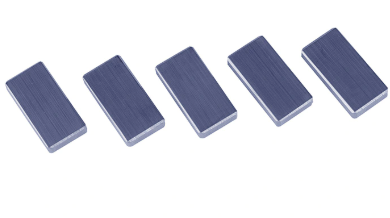
Strong magnet refers to ndfeb magnet:
Compared with ferrite magnet, aluminum nickel cobalt, samarium cobalt magnetism is much more than other kinds of magnets, ndFeb magnet can absorb its own weight is 640 times the weight, so ndFeb is often referred to as a strong magnet.
What is a magnet? A magnet is an object or material that can produce a magnetic field. It has the properties of attracting ferromagnetic materials such as iron, nickel, cobalt and other metals.
Permanent magnets can be natural products, also known as natural lodestones, or manufactured by hand (the strongest magnets are ndFeb magnets).
A non-permanent magnet loses its magnetism.
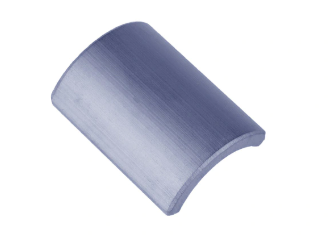
The ancient Greeks and Chinese discovered a naturally magnetized rock in nature and called it "magnet".
The stone magically sucks up small pieces of iron and always points in the same direction as it swings around.
Early navigators used this magnet as their first compass to navigate at sea.
After thousands of years of development, today the magnet has become an essential functional material in our life. Through the advanced powder metallurgy process, the alloy of different materials can achieve and exceed the effect of the magnet, but also can maximize the magnetic force.
Artificial magnets had been around since the 18th century, but the process of making higher magnetic materials was slow until AlNiCo was made in the 1920s.
Then came Ferrite in 1948, Rare Earth magnet in the 1970s, SmCo and NdFeB (NdFeB) in 1986, the most powerful magnet in the world.
At this point, physical magnetic science and technology has been rapid development, strong magnetic materials also make components more small, In 1999 Zibo Shengjin magnet with independent combination of 13000GS rare earth strong magnet broke through the industry precedent, and soon in the industry promotion, China's rare earth magnetic industry ushered in a new world of rapid development.
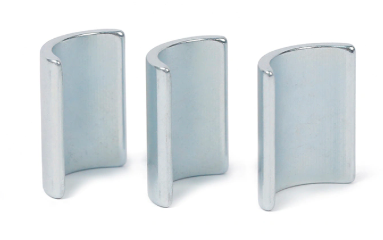
Most magnetic materials can be magnetized to saturation in the same direction, which is called the direction of magnetization (orientation).
Non-oriented magnets (also called isotropic magnets) are much less magnetic than oriented magnets (also called anisotropic magnets).
What is the standard "Polar" industrial definition?
"North Pole" is defined as a magnet that rotates at will and its North Pole points toward the Earth's North Pole.Similarly, the South Pole of a magnet points to the South Pole of the earth.
How can you tell the North Pole of a magnet without marking it?
Obviously you can't tell by your eyes alone. You can use a compass to stick close to the magnet, and the needle pointing to the North Pole of the earth will point to the South Pole of the magnet.
How to handle and store magnets safely?
Be very careful at all times, because magnets can stick together on their own and can hurt your fingers.
Magnets can also collide with each other and damage the magnets themselves (knocking out corners or cracking).
Keep magnets away from easily magnetized objects such as floppy disks, credit CARDS, computer monitors, watches, cell phones, medical devices, etc.
Magnets should be kept away from pacemakers.
For larger magnets, a plastic or cardboard gasket should be placed between each piece to ensure that the magnets can be easily separated. Magnets should be stored in a dry, constant temperature environment.
How to achieve magnetic isolation?
Only the material adsorbed to the magnet can play the role of blocking the magnetic field, and the thicker the material, the better the effect of magnetic separation.
What is the strongest magnet?
The highest performance magnets are rare earth magnets, of which ndfeb is the most powerful.
But above 200℃, samarium cobalt is the most powerful magnet.
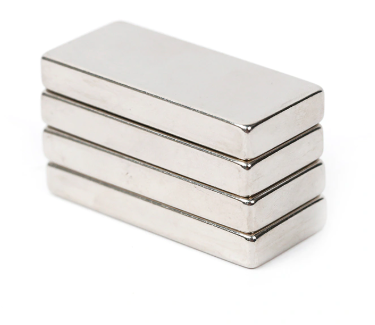
It is well known that strong magnets are very powerful, especially large powerful magnets, which can easily hurt people when used.
So how can a strong magnet get rid of magnetism?
The method is very simple, the strong magnet temperature is below 80 degrees, we just put the strong magnet on the fire for a few minutes, after cooling, you put it next to the iron, found that it has lost magnetism, no longer suction.
The reason why a strong magnet is magnetic is that the iron atoms in a strong magnet are arranged in a regular way.
When it is heated, the iron atoms are disordered and thus lose their magnetism. There are also other ways to demagnetize powerful magnets.
Magnetic steel is mainly divided into two categories, one is soft magnetic, the other is permanent magnetic;
Soft magnetic includes silicon steel sheet and soft magnetic core;
Hard magnets include al-Ni-Co, samarium cobalt, ferrite and NdFeb. Among them, the most expensive is samarium cobalt magnetic steel, the cheapest is ferrite magnetic steel, the highest performance is NdFeb magnetic steel, but the most stable performance, the best temperature coefficient is al-Ni-Cobalt magnetic steel, users can choose different hard magnetic products according to different needs.
How do you define the properties of a magnet? There are mainly three performance parameters to determine the performance of the magnet:
Remanence Br: After a permanent magnet is magnetized to technical saturation and the external magnetic field is removed, the retained Br is called residual magnetic induction intensity.
Coerced Hc: To reduce the B of the permanent magnet saturated with magnetization technology to zero, the reverse magnetic field strength needed to be added is called magnetic susceptive coerced, Jane. It's called coercivity.
Magnetic energy BH: represents the magnetic energy density established by the magnet in the air gap space (the space between the two poles of the magnet), that is, the magnetostatic energy per unit volume of the air gap.
Since this energy is equal to the product of Bm and Hm of a magnet, it is called the product of magnetic energy.
Magnetic field: Magnetic field is the space in which magnetic action is made on the magnetic pole.
Surface magnetic field: Magnetic induction intensity at a specified position on the surface of a permanent magnet.
How to choose a magnet?
Before deciding which type of magnet to choose, it should be clear what role the magnet is required to play.
Main role: Moving, fixing or lifting objects. Desired magnet shape: wafer, circular, square, tile or special shape. Size of magnet required: length, width, height, diameter and tolerance, etc. The suction power of the required magnet, the expected price and quantity, etc. The compass was invented according to the properties of magnets.
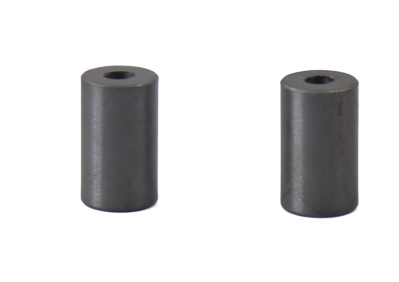
Precautions tips from magnet product manufacturer for storage of strong magnets:
1.Strong magnet do not close to electronic equipment, close will affect the electronic equipment and control loop and affect the use.
2. Magnets do not store in a humid environment, so as to avoid oxidation, resulting in appearance, physical properties and magnetic properties change.
3. People who are sensitive to metal objects will turn their skin rough and red if they approach a magnet.
If the above reaction occurs, please do not touch the strong magnet.
4. Do not magnet close to floppy disk, hard drive, credit card, tape, debit card, TV tube, etc.
If a magnet is placed close to a device such as a magnetic recorder, the recorded data will be affected or even destroyed.

The value of the reverse magnetic field strength required to reduce the magnetic induction intensity to zero is called magnetic induction coercivity (Hcb).
However, the magnetization of the magnet is not zero at this time, but the added reverse magnetic field cancels out with the magnetization of the magnet.
At this time, if the external magnetic field is withdrawn, the magnet still has certain magnetic properties.
Neodymium iron boron coerciveness is generally above 11000Oe.
A magnet is magnetized by an external magnetic field in a closed circuit environment until the technology is saturated and then the external magnetic field is withdrawn. At this time, the magnetic induction intensity of the magnet is called remanence.
It represents the maximum flux that a magnet can provide.
It can be seen from the demagnetization curve that it corresponds to the situation when the air gap is zero, so the magnetic induction intensity of magnets in the actual magnetic circuit is less than that of remanence.
Ndfeb is the highest practical permanent magnet material known as Br.
The reverse magnetic field strength required by a strong magnet to reduce the magnetization of a magnet to zero is called intrinsic coercivity.
Intrinsic coercive force is a physical quantity to measure the anti-demagnetization ability of a magnet. If the applied magnetic field is equal to the intrinsic coercive force of the magnet, the magnetism of the magnet will be basically eliminated.
The Hcj of NdFeb will decrease with the increase of temperature, so high Hcj should be selected when working in high temperature environment.
In the pre-Qin period, our ancestors had accumulated a lot of knowledge in this respect. In their search for iron ore, they often encountered magnetite, or magnetite (mainly iron tetroxide).
These discoveries have been recorded for a long time.
The earliest account of these finds is in several passages in the Guanzi :" Where there is a magnet on the mountain, there is gold and copper beneath it."
Other ancient books such as the Classic of Mountains and Seas have similar records.
The characteristics of magnetic iron absorption were discovered very early, "Lu Shi Chunqiu" nine volumes of master :" Ci zhao iron, or cited.
The people at that time called magnetism "kindness" and they thought that the magnet attracted iron as a loving mother to her children.
And thought :" stone is the mother of iron, but stone has the kind and not kind, the kind of stone can attract his children, not the kind of stone will not attract."
Before the Han Dynasty, people wrote lomagnetism as a stone of kindness.
If a magnet attracts iron, can it attract other metals?
Our ancestors made many attempts, and found that magnets did not attract either gold, silver, or copper, nor bricks or tiles.
By the Time of the Western Han Dynasty, people had realized that a magnet could only attract iron, not other objects.
When two magnets are placed close together, they sometimes attract and sometimes repel each other.
It is now known that magnets have two poles, one N and one S.
Like poles repel each other, opposite poles attract each other.
People didn't know this at the time, but they were aware of it.
In the Western Han Dynasty, an alchemist named Luan Da made use of this property to make two chess pieces. By adjusting the positions of the polarities of the two pieces, sometimes they attracted each other, sometimes they repented each other.
Luan da called it "Fighting chess".
He presented the novelty to Emperor Wudi of the Han Dynasty and demonstrated it on the spot.
The Emperor wudi of the Han Dynasty was so surprised and delighted that he appointed Luan as "general of the five Lures".
Luan Dali used magnets to create novel objects to deceive emperor Wu of the Han Dynasty.
The Earth is also a large magnet, with its poles near the geographic South Pole and the geographic North Pole.
Therefore, magnets on the earth's surface, when they can rotate freely, indicate north and South because they repel each other and attract each other.
This was not clear to the ancients, but they were well aware of this phenomenon.
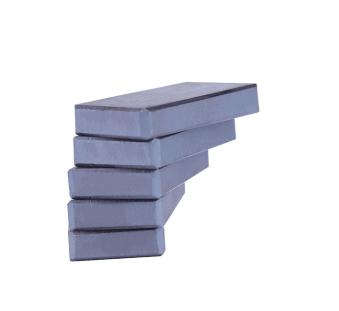
There are many kinds of magnets, which are generally divided into permanent magnet and soft magnet. What we call magnet generally refers to permanent magnet
Permanent magnet magnets fall into two categories:
The first category is: metal alloy magnets including Ndfeb magnets Nd2Fe14B), SmCo magnets, ALNiCO magnets
The second category is Ferrite permanent magnet materials (Ferrite)
1. Neodymium ferroboron magnet: It is the most commercially available magnet and is known as the magnetic king. It has a very high magnetic property, its maximum magnetic energy product (BHmax) is 10 times higher than Ferrite.
Its own mechanical processing performance is also quite good.
Operating temperature up to 200℃.
And its texture is hard, performance is stable, have very good cost performance, therefore its application is extremely extensive.
But because its chemical activity is very strong, so must its surface coating treatment.
(e.g. Zn,Ni, electrophoresis, passivation, etc.)
2. Ferrite magnet: Its main raw materials include BaFe12O19 and SrFe12O19.
Made by ceramic process, it is a hard and brittle material. Ferrite magnet has become the most widely used permanent magnet because of its good temperature resistance, low price and moderate performance.
3. Aluminum-nickel-cobalt magnet: An alloy of aluminum, nickel, cobalt, iron, and other trace metal elements.
The casting process can be processed into different sizes and shapes with good machinability.
Casting al - Ni - Co permanent magnet has the lowest reversible temperature coefficient, the working temperature can be up to 600℃.
Al-ni-co permanent magnet products are widely used in various instruments and other applications.
4. SmCo can be divided into SmCo5 and Sm2Co17 according to different components.
Its development is constrained by the high price of its materials.
As a rare earth permanent magnet, SmCo has high magnetic energy product (14-28MGOe), reliable coerce and good temperature characteristics.
Compared with Ndfeb magnets, samarium cobalt magnets are better suited to work in high temperatures.
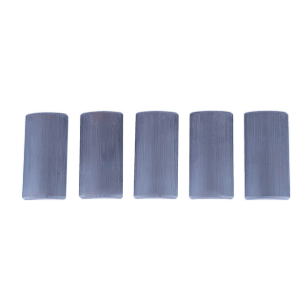
With the development of society, the application of magnet is also more and more extensive, from high-tech products to the most simple packaging magnetic, currently the most widely used
Neodymium iron boron magnet and ferrite magnet.
In the history of magnets, carbon was used primarily in the late 19th and early 20th centuries
Permanent magnet materials are steel, tungsten steel, chromium steel and cobalt steel.
In the late 1930s, the development of aluminum-nickel-cobalt magnets led to the large-scale application of magnets
Use becomes possible.
In the 1950s, the appearance of barium ferrite magnets not only reduced the cost of permanent magnets, but also broadened the application scope of permanent magnet materials
High frequency domain.
In the 1960s, the appearance of samarium cobalt permanent magnet opened up a new era for the application of magnet.
Strnat et al., of the University, developed a samarium cobalt magnet, marking the arrival of the era of rare earth magnets.
So far, rare earth permanent magnets have experienced the first generation
SmCo5, the second generation of precipitation hardening TYPE Sm2Co17, developed to the third generation of ND-FE-B permanent magnet materials. At present ferrite magnet is still the largest amount
But the output value of NdFeb magnet has greatly exceeded that of ferrite permanent magnet. The production of NdFeb magnet has developed into a big industry
The magnetic force is arranged as follows: NdFeb magnet, Samarium cobalt magnet, al nickel cobalt magnet, ferrite magnet.
Magnet production process: Ndfeb magnet, Samarium cobalt magnet, al-Ni-cobalt magnet, ferrite magnet production process is also different.
The ndFeb strong magnet is made of raw material crushed by powder. The initial shape is called blank. Later, according to the customer's requirements, different shapes can be processed, such as: wafer shape, circular ring, square shape, punched shape, trapezoid, concave and convex shape, run-shape, and some irregular shapes.
The performance of strong magnet, according to their different magnetic energy product can be divided into N33-N52, performance is different, can achieve the magnetic force is different, and a variety of high temperature and temperature resistant materials.

